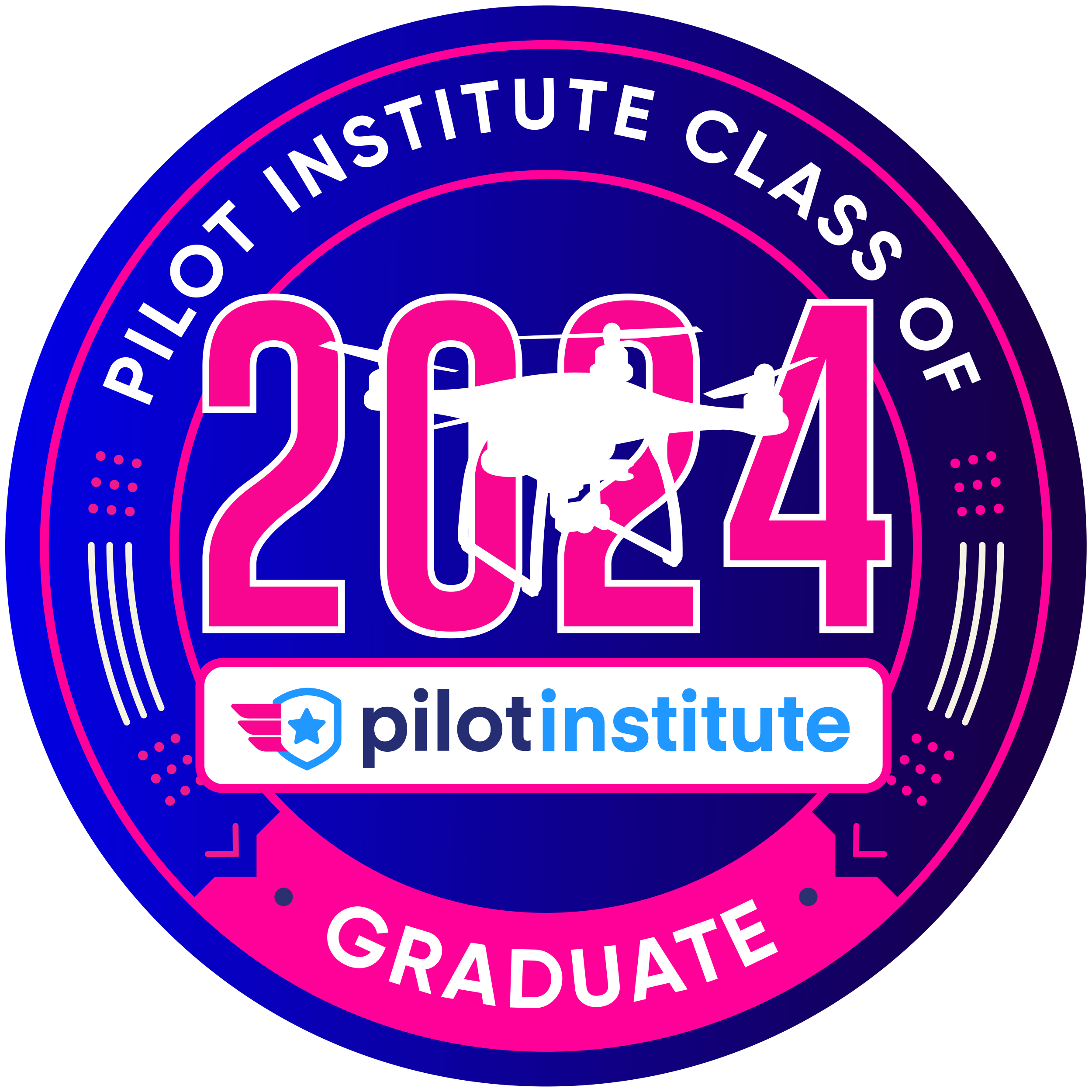Attempting a Double Play with Comet Neowise
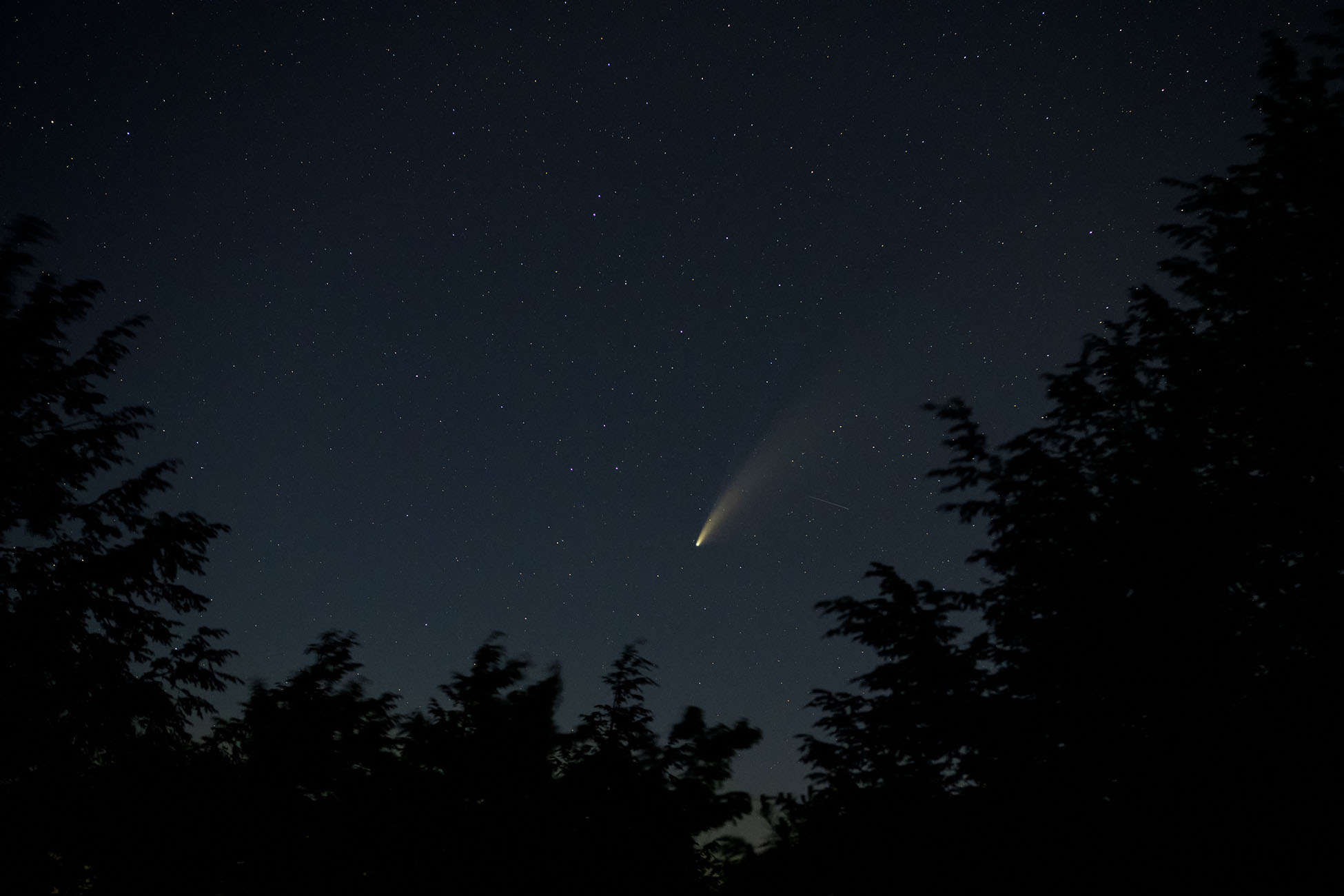
Comet Neowise, visible both in the evening and before dawn, provided an interesting challenge for two shots of the comet in two distinct locations in less than 12 hours.
At 7:00PM on Friday, July 17, the cloud cover that had dominated the day suddenly dissipated giving rise to an opportunity to photograph comet Neowise.
In my location, Neowise was appearing low on the western horizon after sunset, so I had scoped out a potential mountain to view the comet, but the weather had been very uncooperative. So, all of sudden, here was an opportunity, so my wife and I through the equipment in the car, and took off for South Uncanoonuc located in Goffstown, NH.
“The ambitious plan counted on very little sleep.”
Once we made our way to a spot with a good view of the western sky, it was time to wait. Daylight continued to wash out the stars in the west until 9:30PM. Then, using the Big Dipper as a guide along with the IOS app StarWalk2, we were able to spot the comet.
It was faint, but easily discernible with the naked eye.
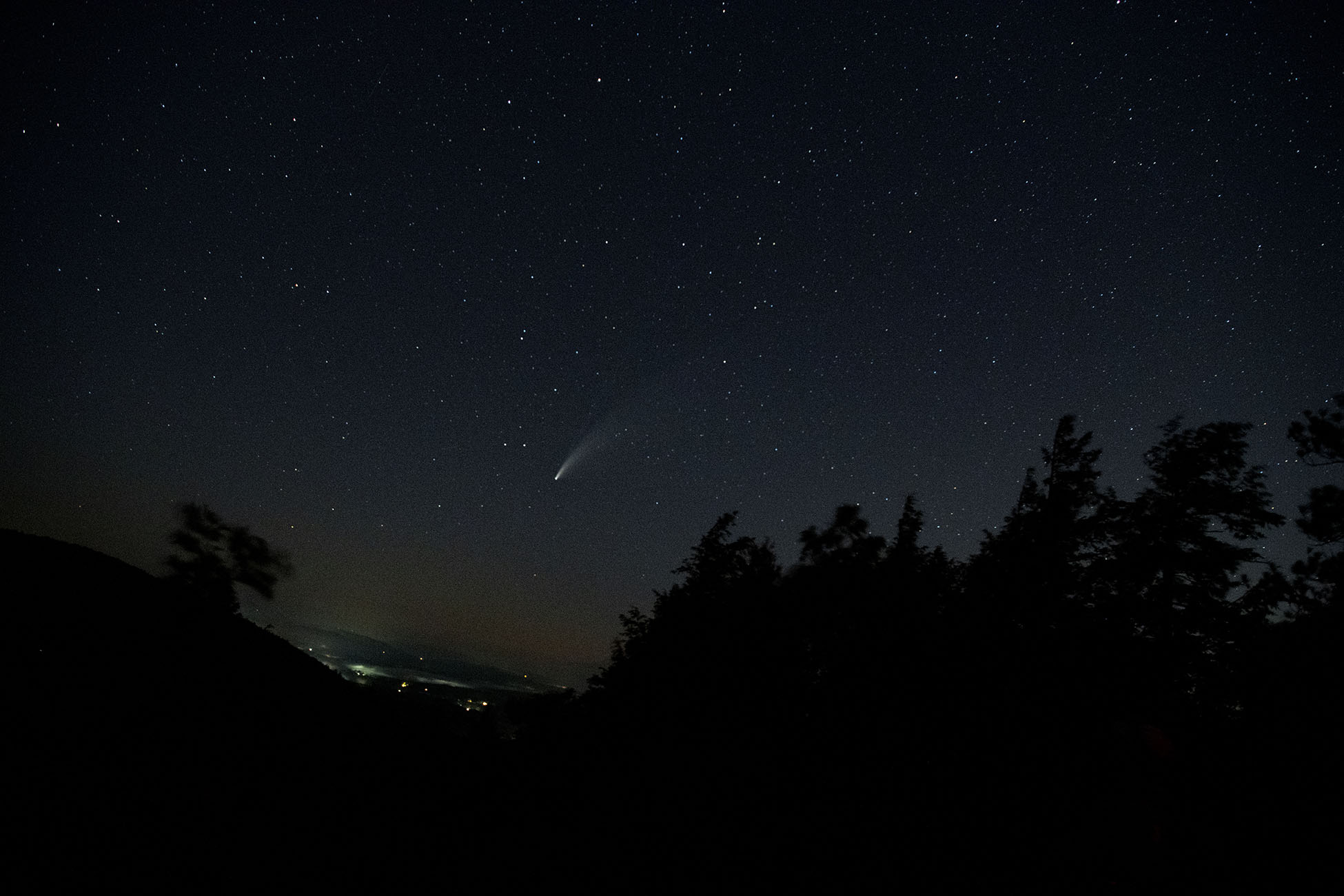
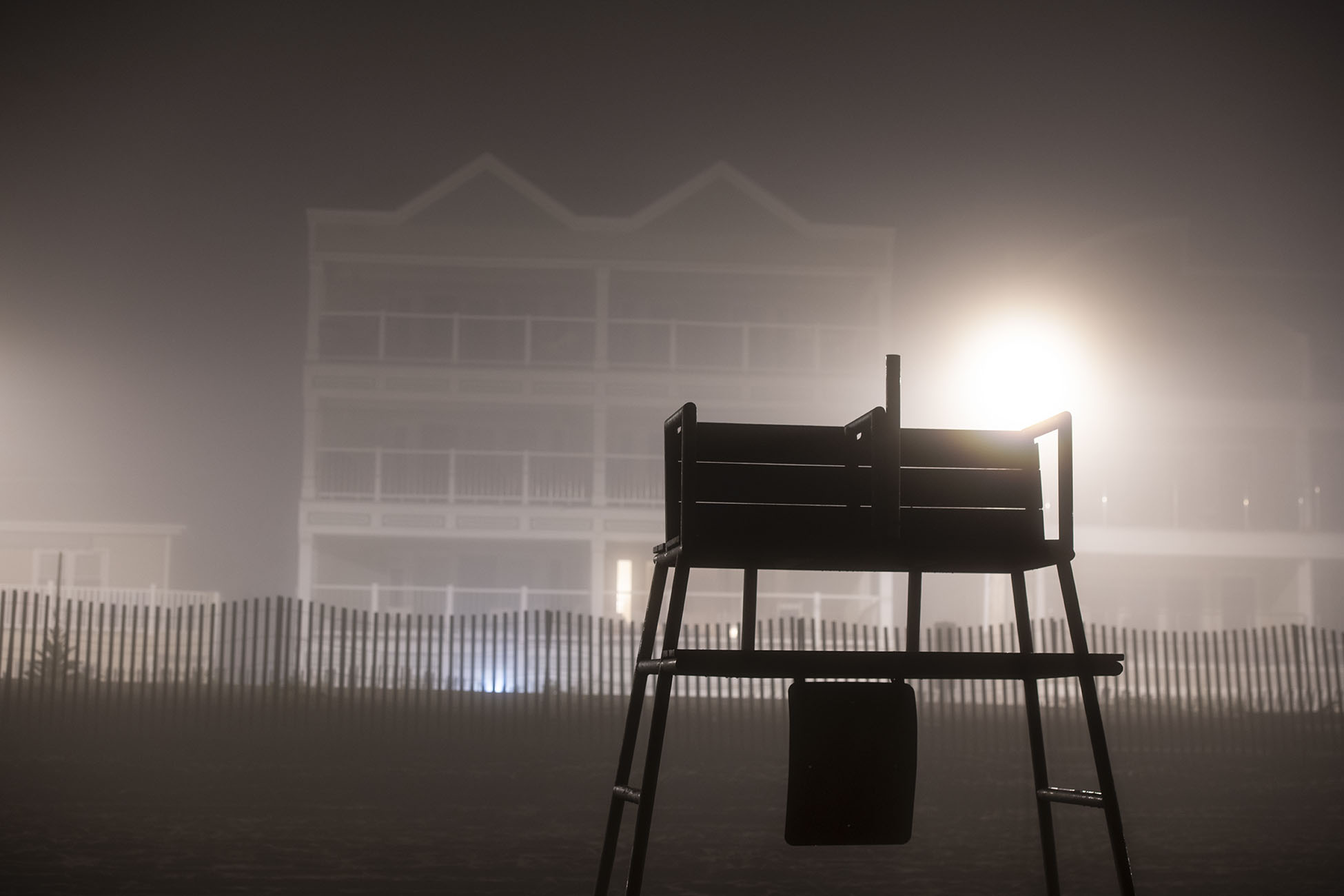
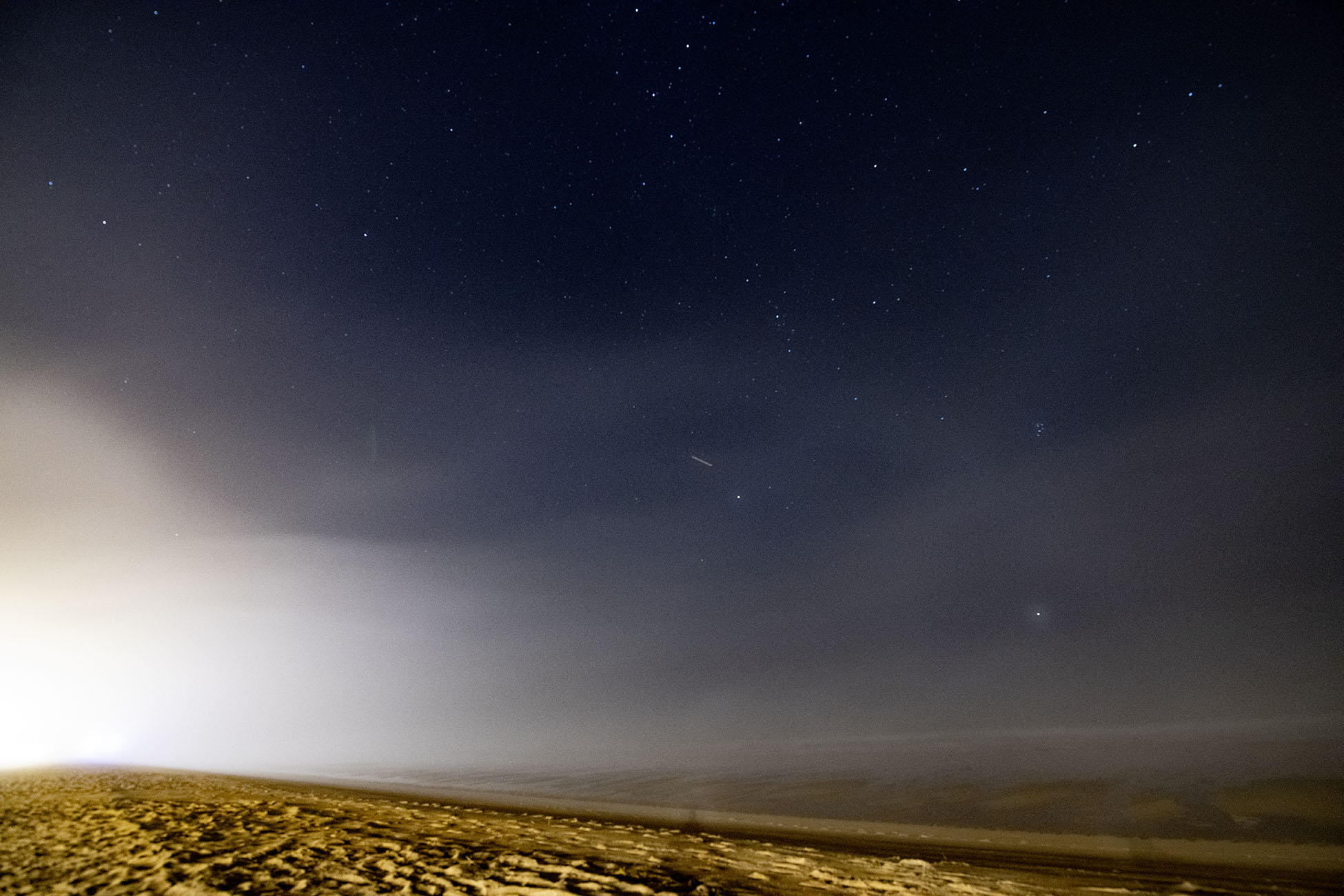
I haven’t done any astrophotography with my Nikon D850, so I was quite impressed that I was able to get excellent images with only a 5-second exposure. My experience in the past was that I would need 20 to 30 seconds which is not good to do if you don’t have an equatorial mount to compensate for the Earth’s rotation because the stars smear during the long exposure. 5 seconds minimizes the smear.
For me, the biggest challenge with astrophotography is FOCUS. You can’t just spin the focus dial all the way to infinity. The lenses allow the focus ring to continue to spin, so there is play at the edges. Ideally you find a light source far away and focus on that as a starting point, but we were in the woods and could only see the sky – no light references. So, I kept taking shots and making small changes in focus until I thought it was good.
I hadn’t counted on Fog
After a couple hours, I decided to go home, sleep a little bit, then get up at 1:30AM to head to the ocean to photograph the comet rising (it was to crack the horizon at 2:30AM).
The plan was solid. Clear sky. No objects between me and the horizon along the ocean. However, what I did NOT anticipate was fog. Oh my! I couldn’t see 200 feet in front of me, much less the horizon. The fog was exasperated by the street lights, bouncing the light all over the place. I waited until sunrise, but the fog never abated, so the morning shoot was a bust.
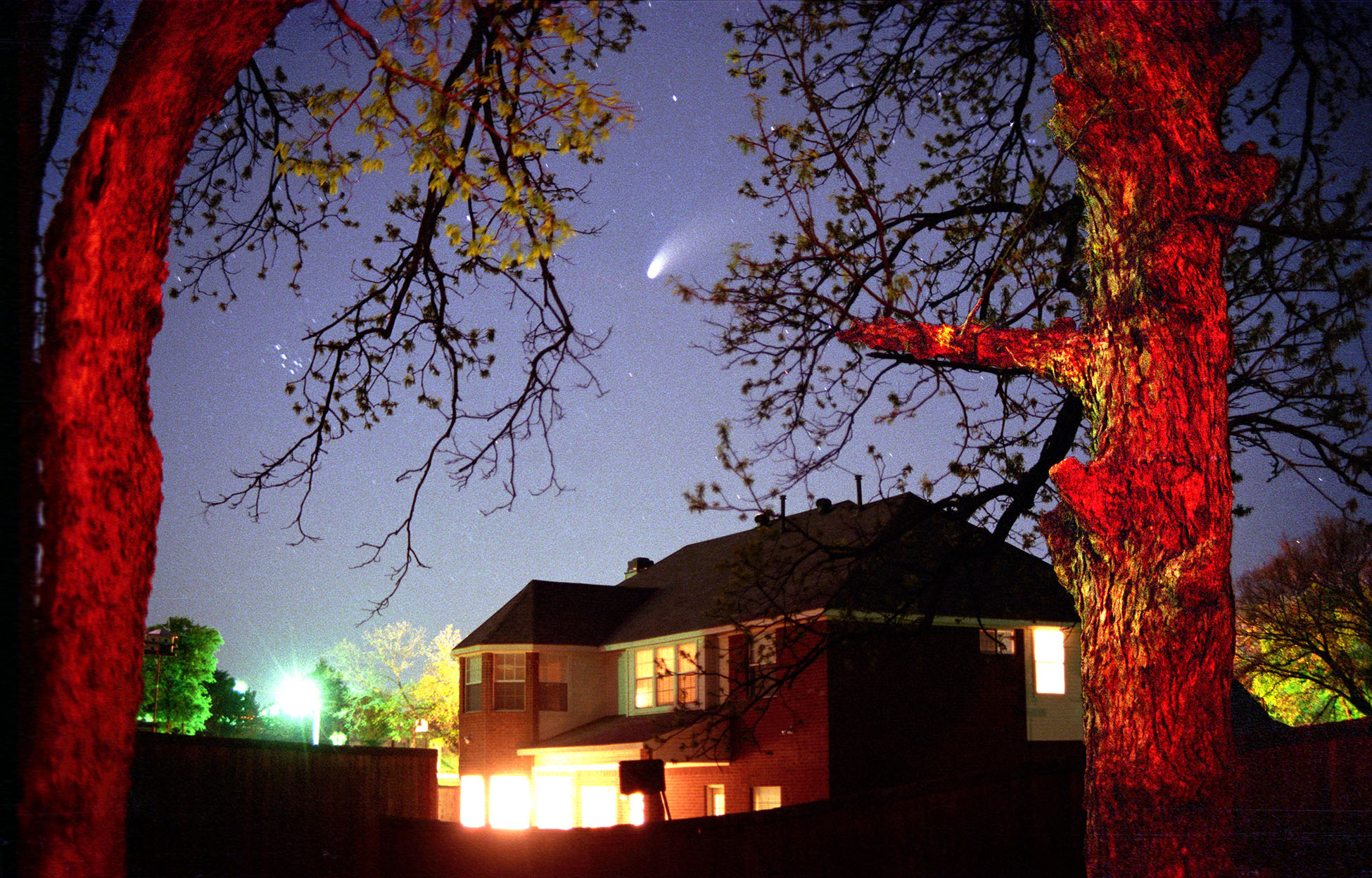
Although messing up my Saturday due to my lack of sleep, the whole experience was fun. The last time I shot a comet was Hale-Bopp in 1997. Here’s the best shot. Note the smearing of the stars due to the long exposure. Yes, this was on film.




